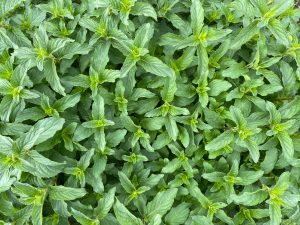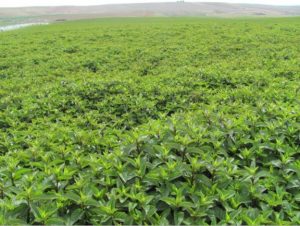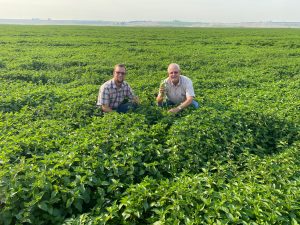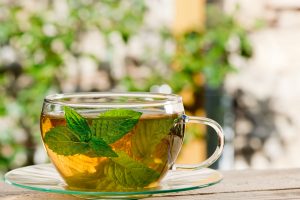Peppermint: Refreshingly Good and Good-For-You
“Stories of our botanicals”
For us, quality and sustainability belong together. We want our business practices to be good for nature, people, and society. Not only do we set the highest standards for our product quality, we are also careful with the natural resources we use. We are committed to biodiversity and more sustainable practices, and the diversity of our products reflects that. Here, we introduce you to some of our favorite crops and provide some information about how they are sourced. Today’s main actor: Peppermint Leaves.
Part 2: Preserving History
Peppermint is entrenched in our society: it is synonymous with oral care (chewing gum and toothpaste), a signal that the holidays are approaching (candy canes and peppermint bark), and a common component of our beloved home gardens. Although one of the most popular herbs today, not a lot of people know about the rich history of peppermint.

Pliny the Elder, the Roman naturalist, wrote that Greeks and Romans used peppermint to adorn themselves and their tables at feasts, and that their cooks used it to flavor both wine and sauces. (1) These dark green, coarsely serrated leaves may only grow to 2-5 inches in length, but their aroma and taste packs a refreshing punch to any product. Today, peppermint is a common flavoring for a range of applications, from cocktails to ice cream.
The same active that gives peppermint its distinctive flavor, menthol, also provides a sensation of coolness and easier breathing in today’s cough and cold remedies. (1) Peppermint has a long history in herbal medicine beyond immune health. One of the oldest surviving medical texts in the world, the ancient Egyptian Ebers Papyrus from 1550 BC, cites mint as a digestive and a tool to soothe flatulence. (2) To this day, peppermint in the form of tea is commonly consumed to aid in digestion and calm an upset stomach. (1)
With such widespread use, how do we ensure this history-rich botanical continues to be a common component in our lives? Fortunately, peppermint is an undemanding plant in terms of cultivation compared to other botanicals. However, it still requires intense field management to ensure optimal yields and the highest leaf quality. This includes careful tillage practices to help insulate the shallow root system through the cold winter months and integrated pest management practices that introduce natural predator insects, which greatly reduce the need for agri-chemical applications.

It is a perennial so well managed stands can last for 4-6 years, and many growing regions have conditions that allow the plant to generate two harvests per season. During harvest, peppermint is cut and laid out to naturally dry in the fields in the arid high desert growing regions, like the American Northwest. The dry leaves are removed and unused stems are most often finely cut and returned to the soil surface as water saving mulch, giving back to the very ground it came from.

1American Botanical Council
2JSTOR
Related Topics
Newsletter on Peppermint October 2020
Functional benefits: how herbal extracts can increase your well-being
Related posts
Food Trends – the taste of 2025
Foodies get your taste buds ready as 2025 is about to get delicious. Here are our top 5 trends we see on this year’s menu. […]
Read moreBold sips ahead: 2025 Beverage Trends you need to know
Fun. Fizzy. Fabulous. Ready to sip on what’s bubbling up in beverages this year? Here are our top 10 trends shaping the industry in 2025. […]
Read moreTea Vibes Only: What’s Brewing in 2025
2025 is serving Tea – but what’s hot in the industry? Get ready as we are spilling the Tea and talk about our top 10 trends […]
Read more


